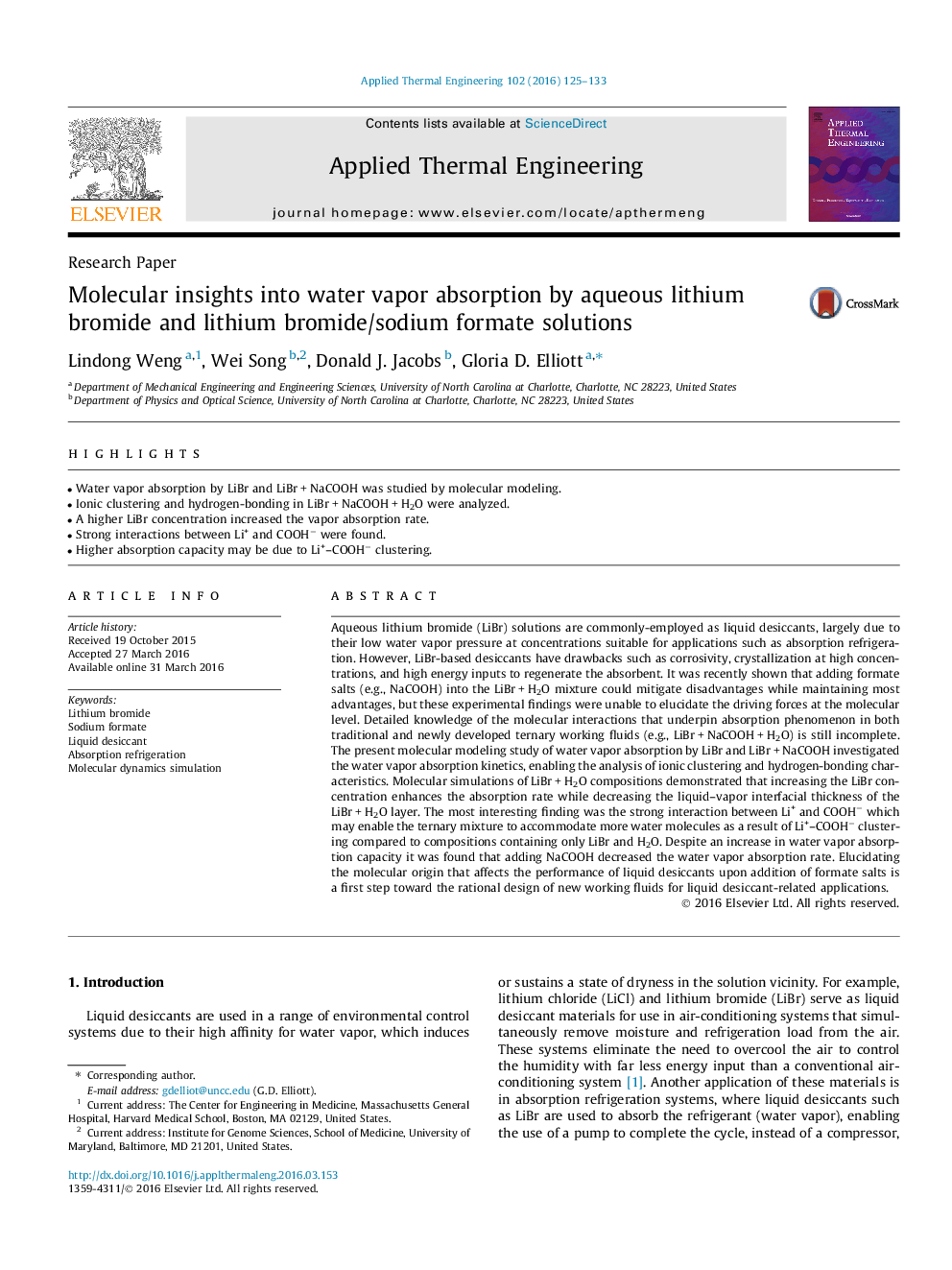| Article ID | Journal | Published Year | Pages | File Type |
|---|---|---|---|---|
| 7047891 | Applied Thermal Engineering | 2016 | 9 Pages |
Abstract
Aqueous lithium bromide (LiBr) solutions are commonly-employed as liquid desiccants, largely due to their low water vapor pressure at concentrations suitable for applications such as absorption refrigeration. However, LiBr-based desiccants have drawbacks such as corrosivity, crystallization at high concentrations, and high energy inputs to regenerate the absorbent. It was recently shown that adding formate salts (e.g., NaCOOH) into the LiBr + H2O mixture could mitigate disadvantages while maintaining most advantages, but these experimental findings were unable to elucidate the driving forces at the molecular level. Detailed knowledge of the molecular interactions that underpin absorption phenomenon in both traditional and newly developed ternary working fluids (e.g., LiBr + NaCOOH + H2O) is still incomplete. The present molecular modeling study of water vapor absorption by LiBr and LiBr + NaCOOH investigated the water vapor absorption kinetics, enabling the analysis of ionic clustering and hydrogen-bonding characteristics. Molecular simulations of LiBr + H2O compositions demonstrated that increasing the LiBr concentration enhances the absorption rate while decreasing the liquid-vapor interfacial thickness of the LiBr + H2O layer. The most interesting finding was the strong interaction between Li+ and COOHâ which may enable the ternary mixture to accommodate more water molecules as a result of Li+-COOHâ clustering compared to compositions containing only LiBr and H2O. Despite an increase in water vapor absorption capacity it was found that adding NaCOOH decreased the water vapor absorption rate. Elucidating the molecular origin that affects the performance of liquid desiccants upon addition of formate salts is a first step toward the rational design of new working fluids for liquid desiccant-related applications.
Keywords
Related Topics
Physical Sciences and Engineering
Chemical Engineering
Fluid Flow and Transfer Processes
Authors
Lindong Weng, Wei Song, Donald J. Jacobs, Gloria D. Elliott,
